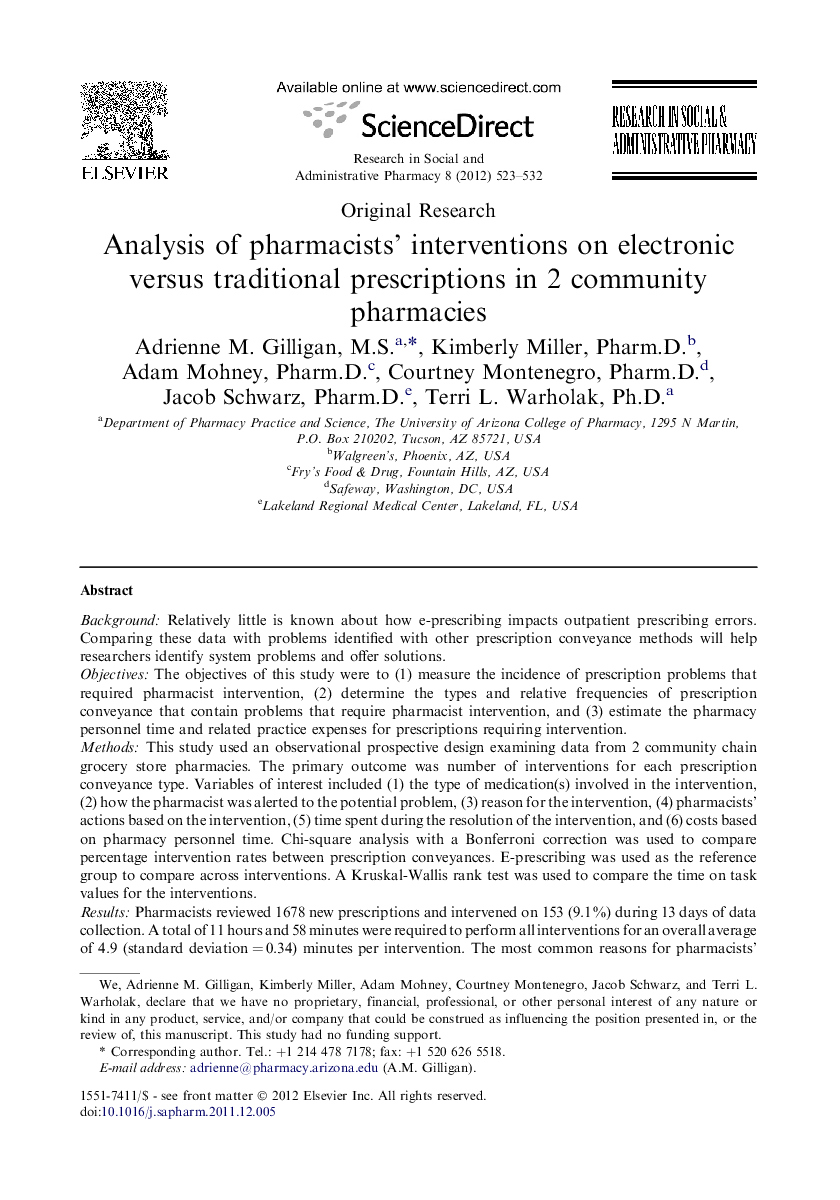| Article ID | Journal | Published Year | Pages | File Type |
|---|---|---|---|---|
| 2508763 | Research in Social and Administrative Pharmacy | 2012 | 10 Pages |
BackgroundRelatively little is known about how e-prescribing impacts outpatient prescribing errors. Comparing these data with problems identified with other prescription conveyance methods will help researchers identify system problems and offer solutions.ObjectivesThe objectives of this study were to (1) measure the incidence of prescription problems that required pharmacist intervention, (2) determine the types and relative frequencies of prescription conveyance that contain problems that require pharmacist intervention, and (3) estimate the pharmacy personnel time and related practice expenses for prescriptions requiring intervention.MethodsThis study used an observational prospective design examining data from 2 community chain grocery store pharmacies. The primary outcome was number of interventions for each prescription conveyance type. Variables of interest included (1) the type of medication(s) involved in the intervention, (2) how the pharmacist was alerted to the potential problem, (3) reason for the intervention, (4) pharmacists’ actions based on the intervention, (5) time spent during the resolution of the intervention, and (6) costs based on pharmacy personnel time. Chi-square analysis with a Bonferroni correction was used to compare percentage intervention rates between prescription conveyances. E-prescribing was used as the reference group to compare across interventions. A Kruskal-Wallis rank test was used to compare the time on task values for the interventions.ResultsPharmacists reviewed 1678 new prescriptions and intervened on 153 (9.1%) during 13 days of data collection. A total of 11 hours and 58 minutes were required to perform all interventions for an overall average of 4.9 (standard deviation = 0.34) minutes per intervention. The most common reasons for pharmacists’ intervention on e-prescriptions were excessive quantity/duration (18.2%) and violating legal requirements (18.2%). The percentages of interventions were significantly different between e-prescribing (11.7%) and both faxed (3.9%) and verbal (5.1%) orders (P < .0001 and P < .01, respectively), with faxed and verbal interventions occurring less frequently. The difference in the intervention rates between e-prescribing (11.7%) and handwritten (15.4%) prescription conveyances were not statistically significant.ConclusionWhen comparing e-prescribing with handwritten prescriptions requiring interventions, no significant differences existed. Results suggest that pharmacists must intervene on e-prescriptions as at the same rate as handwritten prescriptions.
